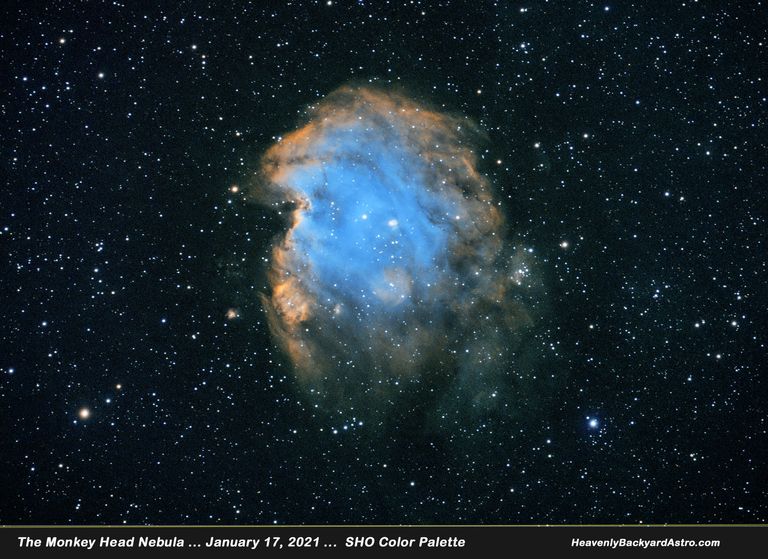
On the 10th of February 2015, a historic scientific breakthrough was made for Romanian astronomy. It is a bright red nova in the galaxy Messier 101, an object extremely rare and very little studied so far.
Today it is called NGC 2174 or "Monkey Head Nebula", yeah, why not have some fun in the mean time :) The discovery and this spectacular photo were made by Ciprian Vîntdevară, the most famous Romanian astronomer and the coordinator of the Barlad Astronomical Observatory.
This is his short description of how he took the photo:
“There is a cloud of star gas and chemical elements made up of hydrogen and oxygen. I used some filters, of course, and after I took the photos I did the processing, ie the image processing, because the raw images don’t look very good. The telescope remained fixed on this object for about 2 hours, followed by about 2-3 hours of processing. Let us assume a working time of 5 to 6 hours only for the respective object.

Originally reported as a possible supernova, it was later proved to be something else entirely: A nova, and not an ordinary one, but a bright red, very rare category of nova that generally forms from the merger of two stars. After careful checks, the position of the new object was reported to the Central Astronomical Telegraph Office and subsequently confirmed by the New Zealander Stu Parker, using a telescope in Spain.
The galaxy Messier 101 is located at a distance of about 21 million light-years, in the constellation Ursa Major. It is also known as the Pinwheel Galaxy.
It is interesting that, following studies of the archives of the major astronomical observatories as well as smaller observatories or images taken by amateur astronomers, it has been found that this object would have appeared in 1993, with shorter episodes or longer eruptions until 2015, when it was actually discovered. Compared to other red novae discovered this one knocked out all records for its category, both in terms of flare duration (more than 153 days) and in terms of brightness.

This discovery marks a historical moment for Romanian astronomy in 2015 and beyond. It was the result of a long activity on the side of astrophotography and research, but also of a strong one desire to prove that anything is possible when you want and really want to achieve something special.


Check it out here!!!
Thank you for participating in the @epistem rare creativity contest.
Congratulations, your post has been upvoted by @oscarps, from the @visualblock curation account
Puedes apoyar a nuestro Testigo @alberto0607 aquí /You can support our Witness @alberto0607 here